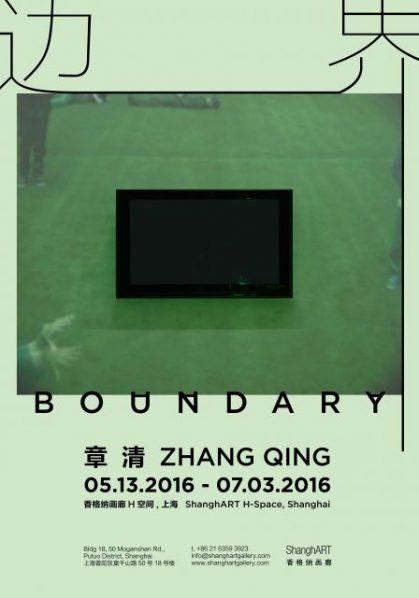
The installation of surveillance is an excellent experiment of die soziale Plastik (social sculpture). Initially it did not exist in society but after creating it, the reality gets looped into the system. Zhang Qing’s work, I suppose, is talking about the possibility of constructing a certain reality.–LU Xinghua
(LU Xinghua, Professor in SIMA, China Academy of Art, School of Humanities of Tongji University. His research mainly engages in Contemporary French Philosophy and Contemporary Art Theory. )
Zhang Qing’s solo exhibition Boundary will open on 13th May in ShanghART Gallery H Space. The exhibition collectively presents artist’s in-depth exploration in Surveillance psychology field in recent years. Surveillance art, as his primary form deployed in the early stage, has been gradually developed into probing and broadening the psychological state under monitoring circumstances in association with multimedia. Six latest art works will be debuted with this occasion. The exhibition continues through July 3rd.
Oriented by personal physical experience in initial stage of creation, artist concentrated on the relationships among gender, body and consciousness. In the meantime, he delved into social reality and psychological state of particular ideology through public interactive performance art. Progressively, a mature art presentation of surveillance has formed after several endeavours in multimedia ranged from performance, installation, photography to video etc.. “Psychological monitoring” as the focal point of artist’s creation reviews the psychological ideology between the observer and the observed through interpreting daily monitoring activities. The development which derived from the tangible study of participant’s behaviour under surveillance camera dispersing to potential psychological ideology supplies multiple opportunities to deepen the depth of monitoring context.
The art works will be exhibited by monitoring video work and video installation. 886 Boylston Street, Boston, MA, United States casts the historical event as a clue, signifying the roles of surveillance in daily life. Scoped from “peripheral vision”, the latest work Boundary presents incomplete images which elicit observers to “spy” on the monitor screen. Video installation works disassociate from conventional aesthetical definition by unbalancing the relationship of physical force. ‘Unbalanced’ installations lose the dependent relationship in the space while the released force transmits and impacts on audiences’ psychology. Figures appearing in Don’t be too bizarre behave in hilarious ways, which reinforce watcher’s experience in a monitoring psychology.
About the artist
Born in 1977, Zhang Qing is one of the prominent Shanghai experimental artists, now he works and lives in Shanghai. His recent exhibitions include, Move on Asia, Video art in Asia 2002-2012, ZKM Media Museum, Germany (2013); China Onscreen Biennial, Los Angeles and Washington D.C., USA (2012); Abandon Normal Devices Festival 2011, FACT, Liverpool, U.K. (2011); cctv, ShanghART H-Space, Shanghai (2011); Room without a View, Freies Museum Berlin, Berlin, Germany (2010); Don't Go So Fast, ShanghART Beijing, Beijing (2009); Trans Local Motion - 7th Shanghai Biennale in 2008, Shanghai Art Museum, Shanghai (2008) etc.. Zhang Qing rewarded Asian Cultural Council Fellowship (USA) in 2013.




























